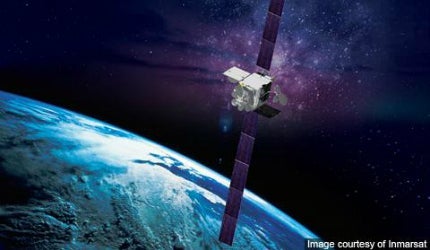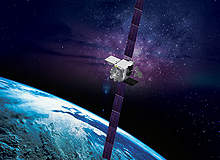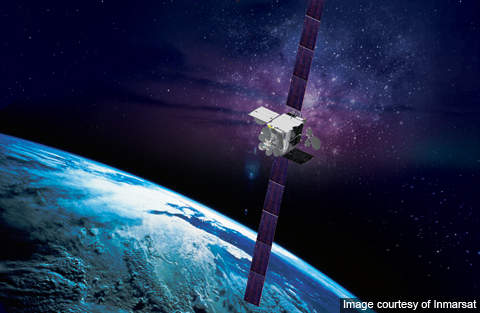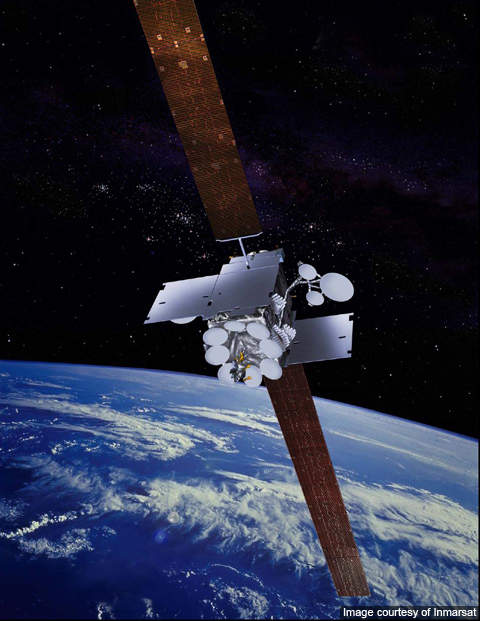
The Inmarsat-5 (I-5) is a telecommunication satellite principally used to render mobile broadband communications for deep-sea vessels, in-flight connectivity for airline passengers and high quality video, voice and data services to the entire globe.
The satellite is being designed and built by Boeing Space and Intelligence Systems (BSIS). It will be owned and operated by global mobile satellite broadband service provider Inmarsat.
Inmarsat-5 F1, the first satellite in a series of four Inmarsat-5 satellites, was launched into Geosynchronous Orbit through BSS-702HP platform in December 2013. Upon completion, the four Inmarsat-5 satellites will join Inmarsat’s existing 11 geostationary satellites, which render voice and data services. Operational service of the spacecraft is expected to begin in 2014..
Inmarsat-5 Design
The Preliminary Design Review (PDR) of Inmarsat-5 was completed in March 2011. The Critical Design Review (CDR) began in the same month and successfully completed in October 2011.
The satellite is being designed for a lifespan of 15 years. It will weigh around 5,900kg at launch and 3,750kg in orbit. It will consume 15kW of power at the initial stage of operation and 13.8kW during the final stages of design life.
The spacecraft will be fitted with two unfolded solar wings made up of five ultra triple junction gallium arsenide solar panels for providing electrical power. It will also house dual lithium-ion batteries, antennas, repeaters, control thrusters, a liquid apogee engine and station-keeping thrusters.
Development
Related project
Intelsat 21 Communication Satellite, United States of America
The Intelsat 21 (IS-21) communication satellite was successfully placed into the geosynchronous Earth orbit (GEO) in August 2012.
Inmarsat awarded a contract to Boeing in August 2010 to design, build and supply three Inmarsat-5 satellites as part of a £752m ($1.2bn) wireless broadband network known as Global Xpress. The wireless broadband network will operate at Ka-band microwave frequencies ranging between 18GHz and 31GHz, which however possess more signal quality issues compared to that of Ku-band (12GHz-18GHz) frequency range.
Harris Corporation will supply Ka-band antennas to BSIS for three Inmarsat-5 spacecraft as part of a contract signed in March 2011. These antennas are part of the Gimbal Dish Antenna (GDA) systems.
Inmarsat contracted Rockwell Collins in August 2011 for the development, production and distribution of User Terminals (UTs) for future GX aeronautical services.
In April 2012, Inmarsat signed a contract with Honeywell to develop the onboard hardware that will enable users to connect to Inmarsat’s GX aeronautical services.
The second and third Inmarsat-5 satellites are scheduled for launch in 2014. In October 2013, Boeing received authorisation to build fourth Inmarsat-5 satellite. Delivery of the fourth spacecraft is scheduled for 2016.
Communications
The Inmarsat-5 is a digitally channelized transponded satellite which will render communication capacity, connectivity and flexibility. The 89 Ka-band transponders fitted in the spacecraft will provide mobile satellite services to the entire globe. The satellite will render speeds at the rate of 50mbps (downloads) and 5mbps (uploads) for mobile user terminals having a size of 60cms.
Boeing 702HP satellite bus
Designed and manufactured by BSIS, the BSS-702HP is a flight proven satellite bus principally being deployed for geomobile services. It will be equipped with the xenon ion propulsion system (XIPS) for all on-orbit manoeuvring. The satellite bus can accommodate 5,900kg of payload and was first introduced in October 1995.
Launch vehicle
The Inmarsat-5 is compatible to be launched atop Ariane, Sea Launch, Proton and Atlas launch vehicles. In August 2012, Inmarsat signed a contract with International Launch Services (ILS) to launch the Inmarsat-5 satellite on the Proton launch vehicle. The satellite will be launched from Baikonur Cosmodrome in Kazakhstan.
Satellite control centre (SCC)
The Inmarsat-5 launched into orbit will be tracked, operated and monitored from the satellite.
Control Centre (SCC) that will be built at Inmarsat office in London. The SCC will be designed and built by BSIS.
The SCC will keep track of the spacecraft and ensure that the on-board systems are fully operational. The data will be supplied to the control centre by four telemetry tracking and command (TT&C) stations situated in Italy, China, western Canada and eastern Canada.
The TT&C is a technology principally used to identify and operate the satellite when diverging from its orbit.
Traffic flow in the Inmarsat network will be monitored through a Network Operations Centre (NOC) deployed at the Inmarsat headquarters. The satellite and SCC will communicate through a unique bandwidth assigned to the service provider.




